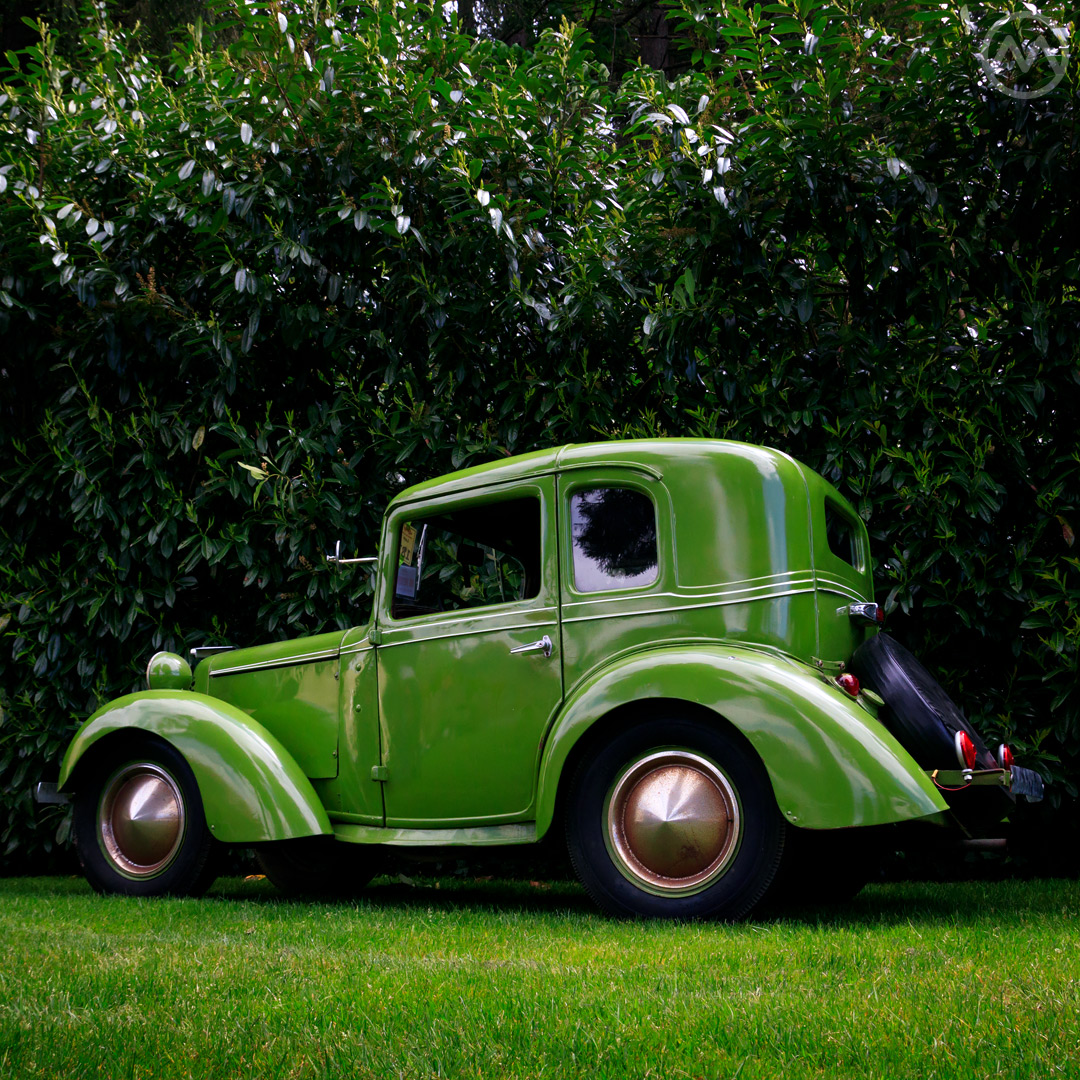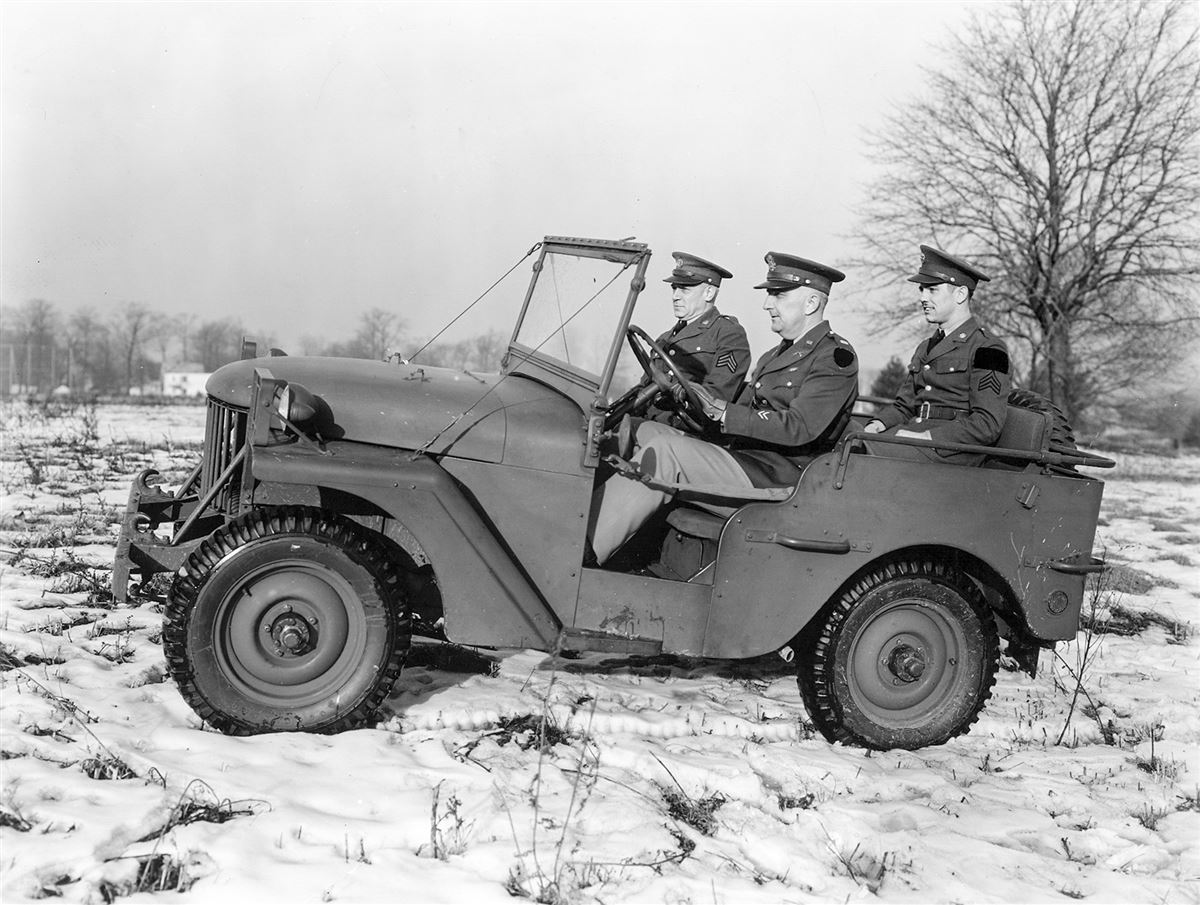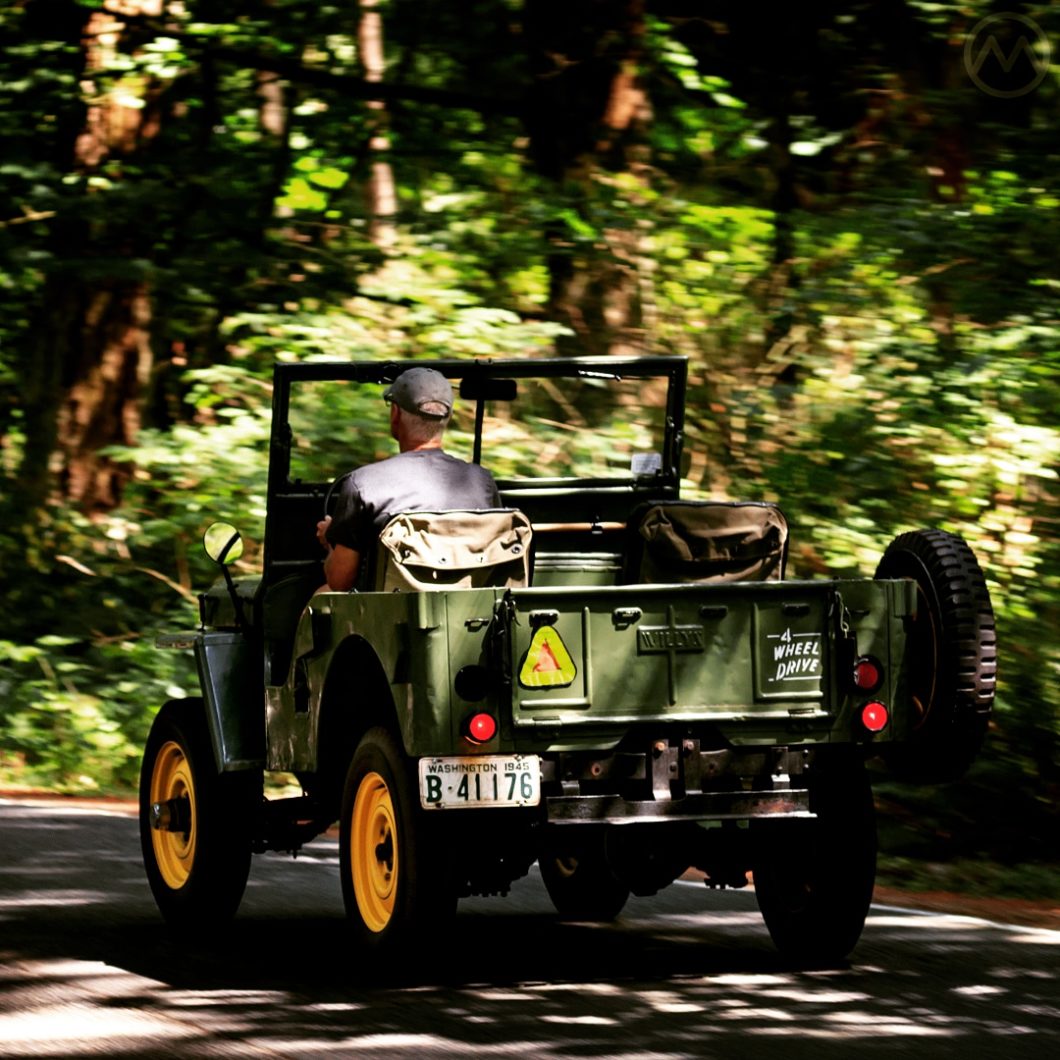It’s 75 years and one day since WW2 ended (technically, it’s “victory day” in several countries today), and one of the defining vehicular legacies of that time is the Willys Jeep. The war changed far more than cars or the automotive industry, but the Jeep was a piece of war material that became a part of everyday life.
Even before the conflict was over, Jeeps had begun to make their way into civilian life – one of the earliest military Jeeps, a Ford GP, was retired in 1943 and ended up working on a Kansas farm that very same year. After D-day and the Soviet retaking of Belarus in the summer of 1944, Willys-Overland were already working on a way to adapt their military hardware to something consumers would want.
Willys (prounounced “Will-iss”) dated back to 1908 but had concentrated on economy cars since 1934 – a strategy that allowed them to ride out the depression despite going into receivership in 1933, but which provided only a subsistence level of sales. The company sold just 16,000 cars in 1939. The small Willys became the restyled “Americar” by 1941 and had a little more success, but Willys would need something different after the war and it already had the Jeep.
Early experiments in creating a “civilian” Jeep were the CJ-1 and CJ-2, both prototype programs that were not produced for sale to the public. The first true “civilian” Jeep was the CJ-2A. Since it was directly derived from the military Willys MB, it shared the production line, and the first ones rolled off the line on July 17, 1945.
The Jeep was by then world-famous, but it’s origins lay at American Bantam of Pennsylvania, not Willys, almost exactly five years earlier.
American Bantam
Bantam was an outgrowth of the license-built American Austin. Set up to build licensed Austin Sevens as several other companies (like Rosengart in France and BMW/Dixi in Germany) were, it became clear very quickly that the Seven was just too small for American tastes. The company failed, but was reorganized into American Bantam by car salesman Roy Evans.
The company continued to build cars based on the Seven, sometimes with bodies styled by the famed designer Count Alexis de Sakhnoffsky. The American Austin may have been too tiny for American civilians, but the company was successful in getting the Army interested in it as a light reconnaissance vehicle.
Early trials weren’t so successful – the cars were light and capable, only rear-drive, a limitation in deep mud – but the Army’s interest in Bantam’s tiny pickup truck grew quickly as hostilities heated up. For Bantam, the military was a lifeline – it was in even worse shape than Willys despite its small size and low overhead.
Bantam’s small size and design talent – led by ex-Duesenberg and Stutz man Harold Crist – made it capable of meeting the very urgent brief for a light army vehicle issued on July 11, 1940. Bantam already had the ear of the Army and then-Senator Harry Truman, but many firms vied for the lucrative military contract that would come out of the RFP, including Willys and Ford.

Crist and designer Karl Probst began working on the “Blitz Buggy” on the 17th. They worked almost around the clock for 44 days, and they were the only firm to meet the Army’s tight 7-week deadline for a prototype. The only other firm to come close was Willys-Overland.
Bantam’s design was the best and the only one delivered on time, but the tiny size of the company meant it could never build as many as the Army needed. Willys and Ford designed versions of Bantam’s creation that were modified to use their own parts and with some improvements for production, with the two prototypes being the Willys “Quad” and the Ford “Pygmy,” later the GP.
Willys’ truck had more power than the other version thanks to the “Go Devil” 134-cid F-head four designed for the small Willys cars in 1937. Designed for a small vehicle and more powerful than the Continental-sourced four in the Bantam, it was the right combination of Bantam’s design and Willys’ motor. Willys engineer Barney Roos was in charge of the adaptation.
The Majors Come In
The design would have to be standardized, and for a time it was an option question about which version would be the final one. It was the Willys version which got the nod there – but the Allied nations were in such dire need of vehicles that all three pre-standardized designs were built for a time – more than 8,500 non-standard Jeeps in total, nearly 60% of them Ford built. Most were shipped off via the Lend-Lease act to Britain and the Soviet Union.
The final version used elements from all three designs, and the face of the Jeep was primarily contributed by Ford. Evans may have seen the Jeep as salvation, but Army Quartermaster Corps had different priorities.
Ford and Willys simply had more production capability than Bantam, and Willys had hired the very savvy ex-Chrysler exec Joseph W. Frazer in 1939. Frazer, later the titular “Frazer” in “Kaiser-Frazer” had the connections and know-how to lock a contract like this and did.
Because Willys had the version that was closest to the final, it ended up with the license. Even Willys, however, couldn’t build enough of them, hence Ford’s continuing involvement. Frazer also directed the trademarking of the Jeep name in February of 1943, which would be the subject of future legal battles with Bantam and Ford. The “Jeep” trademark was not awarded until 1950.
The light, small “Bantam Reconnaissance Car” or “BRC-40” was gradually forgotten after the standardization, but the vehicle’s capabilities would look familiar to offroaders today – light body, four-wheel-drive, short wheelbase and overhangs – for a vehicle designed to be used off-road, it was a pitch-perfect recipe. It used simple, easy-to-fix hardware, solid axles and leaf springs.
Bantam was a small company and getting the contract might have enlarged it, but it had little leverage in a time of such dire need, and management wanted to help the country rather than get the credit. For much of WW2, Bantam built light-duty Jeep trailers, which would be its vocation after the war as well until 1956.
Meanwhile, the Willys MB and its Ford-built twin became a universal sight across the theatres of the war.

The actual origin of the Jeep name is unknown, and soldiers referred to other vehicles as “Jeeps” that were not the famous MB, but Willys, previously a maker of economy cars, became the “Jeep company” because of the war. “Jeep,” may have been derived from Popeye’s strange go-anywhere pet “Eugene the Jeep” in the popular comic strip, or it might have been related to the initials “GP” (standing for “General Purpose”), or it may have had more obscure military origins dating back to WW1.
The name started to appear publicly as early as mid-1941 when an early Jeep demonstrated its capabilities by climbing the Capitol steps in Washington D.C. They were also sometimes called “Peeps,” famously by President Roosevelt in a 1942 interview about defending the Atlantic coast. In Congressional hearings, it began to be referred to as the “Willys-Overland Jeep” that same year.
The CJ-2A
After the summer of 1944, Willys began working on the CJ-1 (never called that by the factory) and CJ-2 programs to add civilian practicality to the truck. Willys reasoned that because the Jeep was a purely utilitarian vehicle, that it’s audience would be primarily farmers and agrarian customers – it even registered another name “AGRIJEEP” for that purpose.
CJ-2As began rolling off the line a month before VJ day, easy to do since Willys did not have to retool very much for the truck – which was not much more than an MB with a different tailgate, slightly different front styling, a spare wheel and tire, a different 3-speed transmission, and a few civilian upgrades to the seats and other fittings. Early CJ-2As even used leftover military parts into 1946.
The truck again used the old “Go Devil” 134-cid F-head four and was the first four-wheel-drive production vehicle. It was slow and agricultural but soon had a following – it could serve as an economy car, tractor, off-roader, and plow (pusher or puller).
Willys did have some trouble with having to compete with army surplus Jeeps during the life of the CJ-2A, but successfully asked the Government to donate most of the ones that had been shipped overseas to local governments and to scrap a good number of them. Army surplus selling aside, more than 214,000 CJ-2As were built.
The new Jeeps came only in a limited palette early on – Pasture Green with Autumn Yellow wheels or Harvest Tan with Sunset Red wheels until late 1946 when other colors joined the lineup. The original trucks were produced through 1949 with various running changes before being replaced with the CJ-3A.

